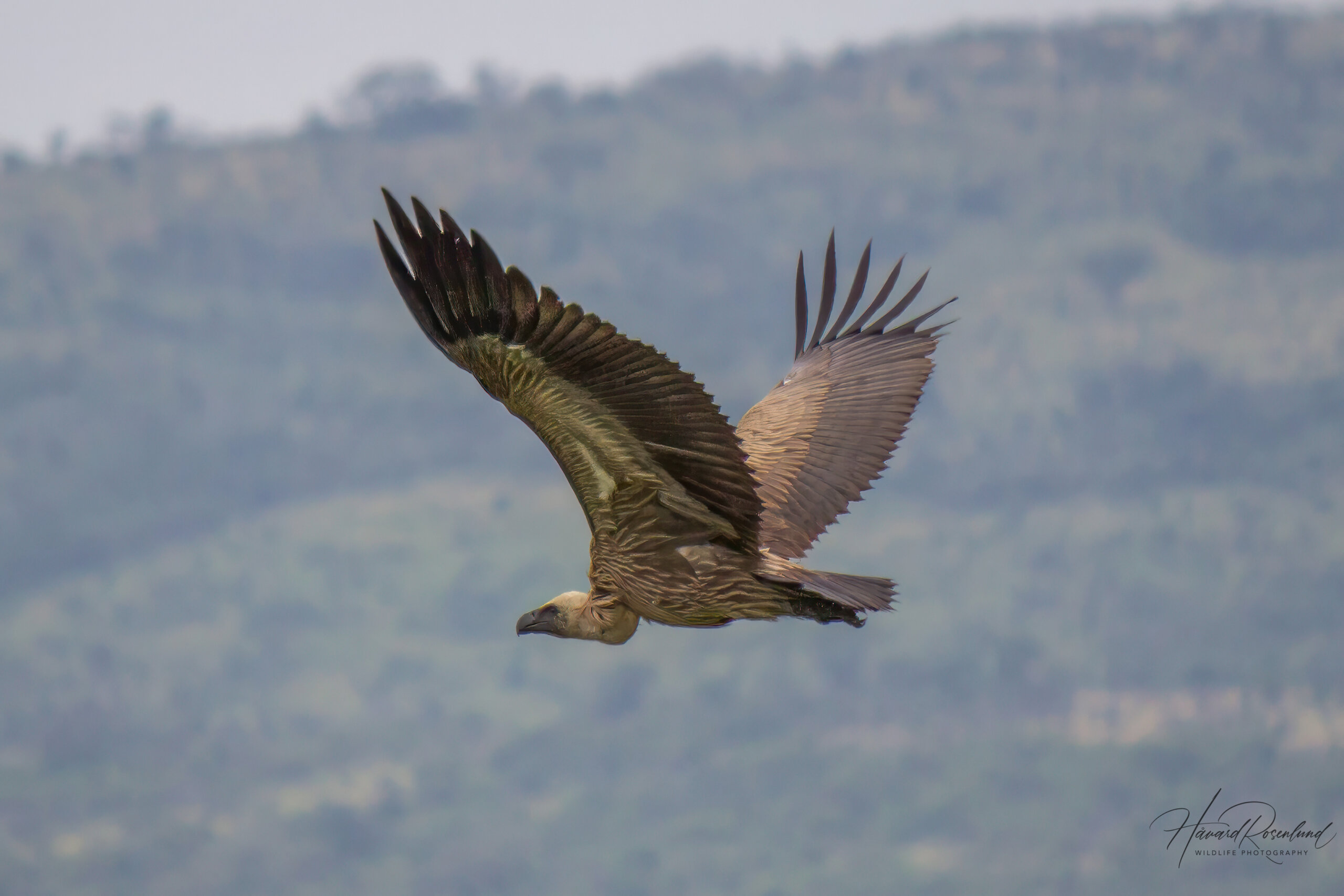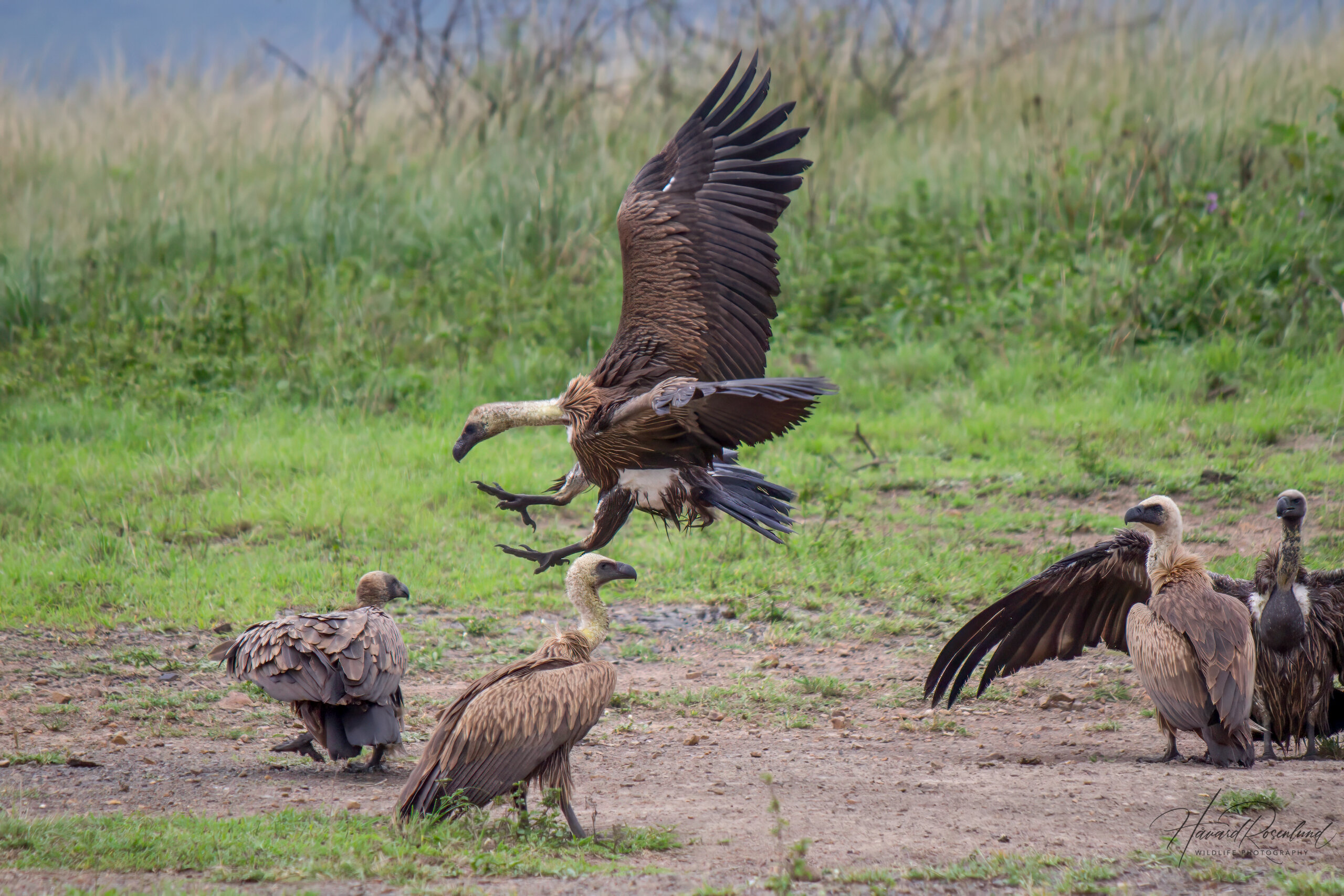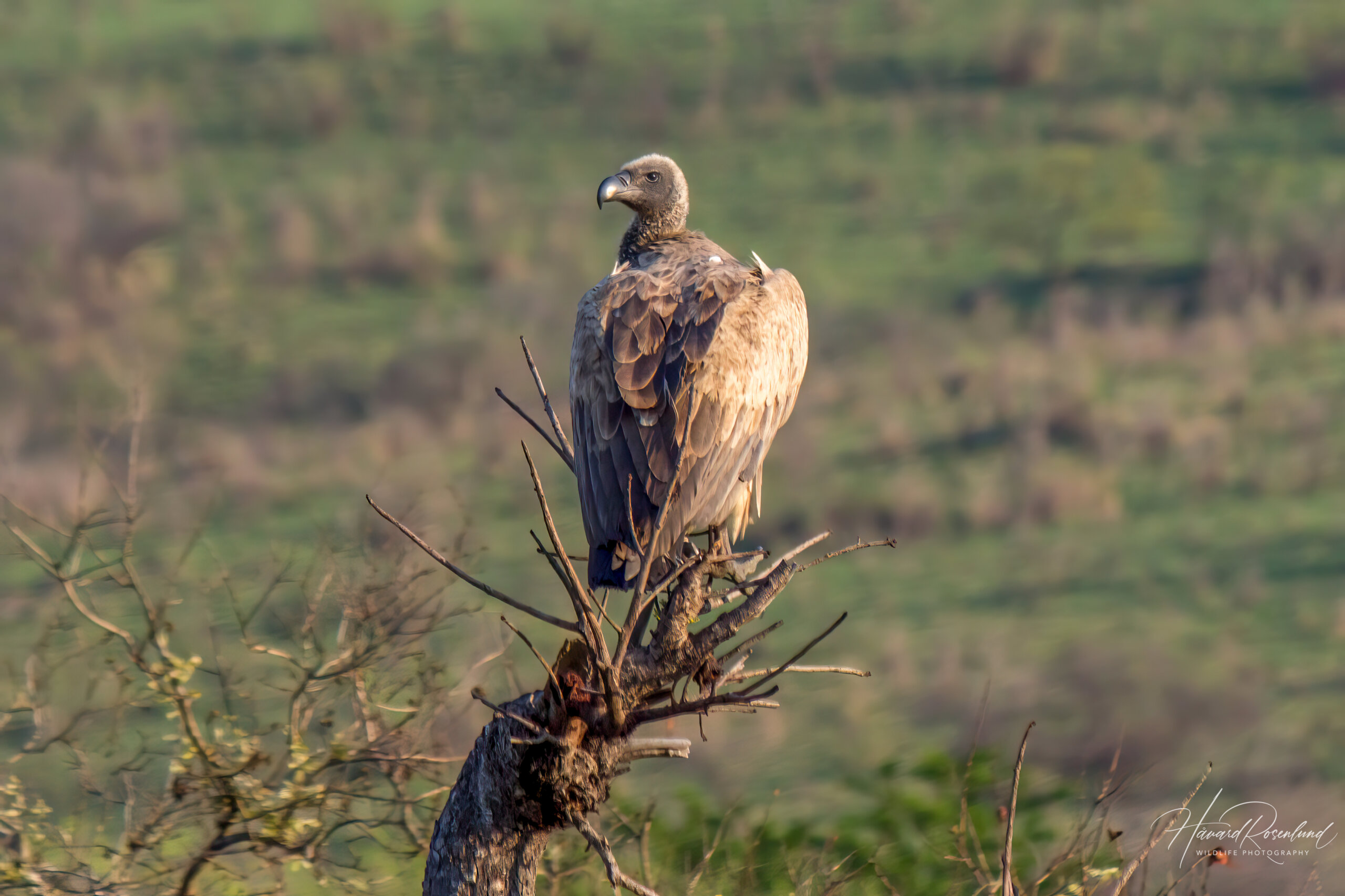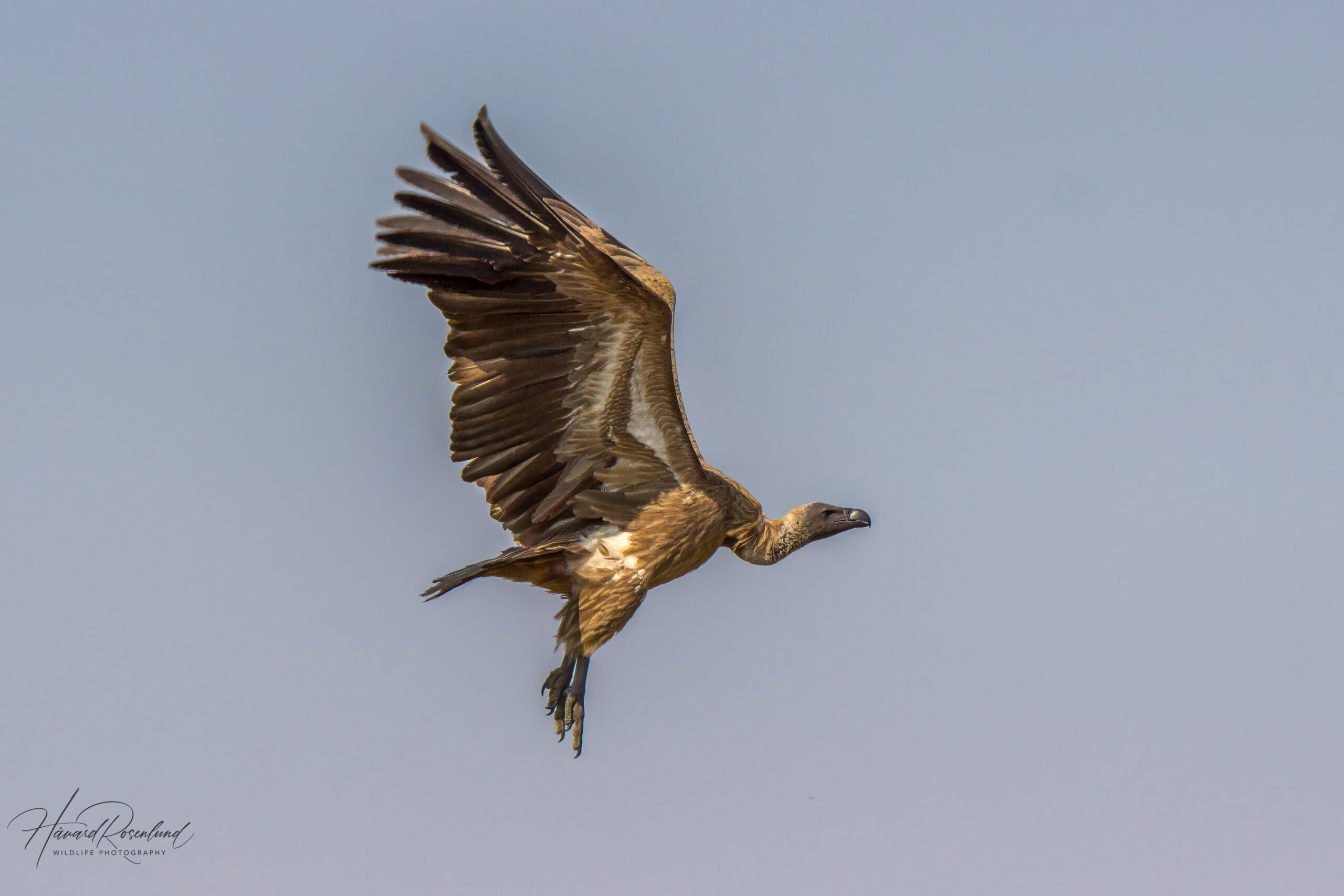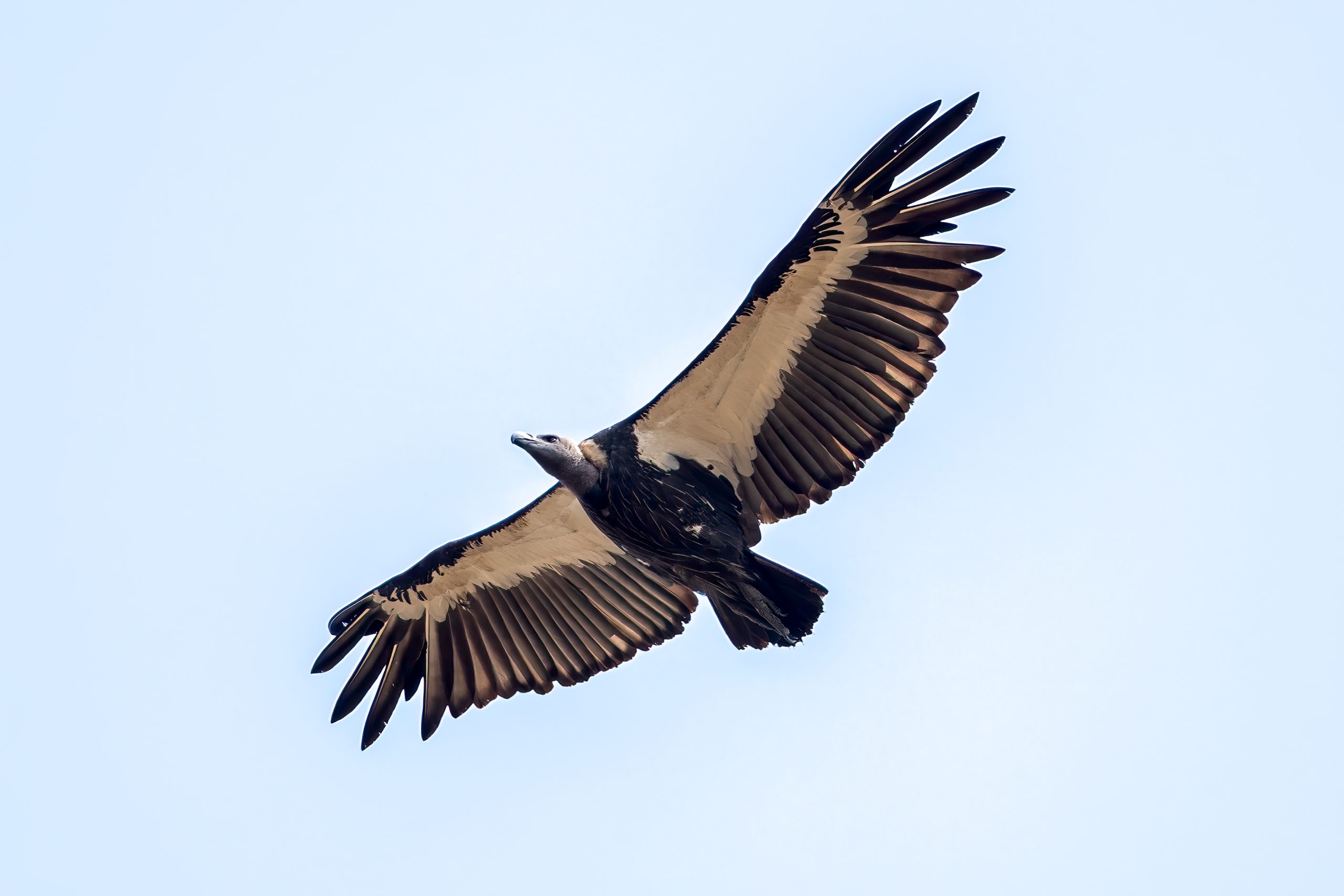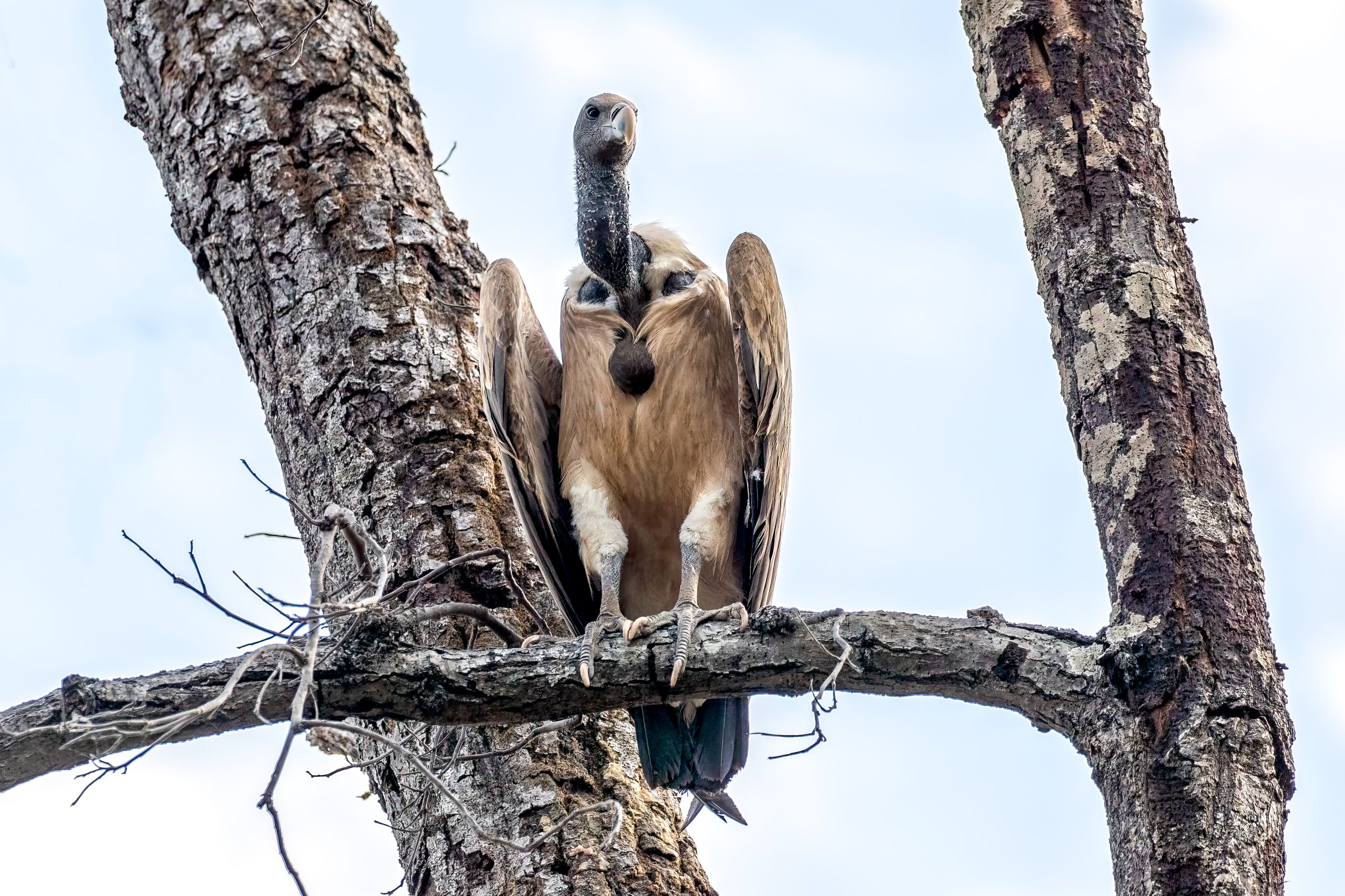Description
The white-backed vulture (Gyps africanus) is the most common vulture species in Africa. It grows to a length of 78-98 cm (31-39 in) and wingspan can reach up to 2.25 m (7 ft). Like most vultures it is featherless on both head and neck, and the skin is black. Plumage is brown but varies in darkness with age. Older individuals, especially females, are often lighter in coloration. The darker flight feathers are more prominent on lighter individuals. It has a white patch on the lower back, which has given it its name. Can be confused with the similar Cape vulture (Gyps coprotheres), which is a lot larger and generally much lighter in coloration.
Diet, behavior & habitat
White-backed vultures prefers savanna and woodland habitats with large numbers of game or livestock. Vultures are known for being scavengers, and the white-backed vulture is no exception. The large and broad wings make it possible for white-backed vultures to soar for hours while scanning for food. They are known for their keen eyesight and when one individual has spotted a carcass, others will take notice and follow. As many as 100-200 individuals may gather at one carcass, and on a large elephant carcass there can be up to one thousand individuals. Fighting among individuals is inevitable when feeding. They are small compared to other similar vulture species, and not as powerful. They cannot penetrate thick skin, and feed mainly on soft tissue and bone fragments. This species is also known to scavenge for trash in populated areas.
Nesting
The white-backed vulture nests in loose colonies of 2-13 individuals. The nest is made up of stick and twigs and is lined with grass and leaves. It is either situated in the canopy or a large fork of a large tree. The female will lay a single egg, and both parents will incubate the egg for around 56 days. Both parents will take part in feeding the chick, which leaves the nest after about 4 months.
Status & Threats
The white-backed vulture has seen a large decline in numbers over recent years. Main threats to the species is habitat loss, human persecution through poisoning, use in traditional medicine, illegal trade, reduced numbers of wild game, and electrocution on pylons. Large populations still remain in large protected areas, but vultures travel over vast distances and often end up in areas populated by humans, often resulting in large numbers of dead or captured vultures. Although the white-backed vulture has a large range in sub-Saharan Africa, the downward trend of the population is concerning and it is listed as critically endangered on the IUCN Red List.







